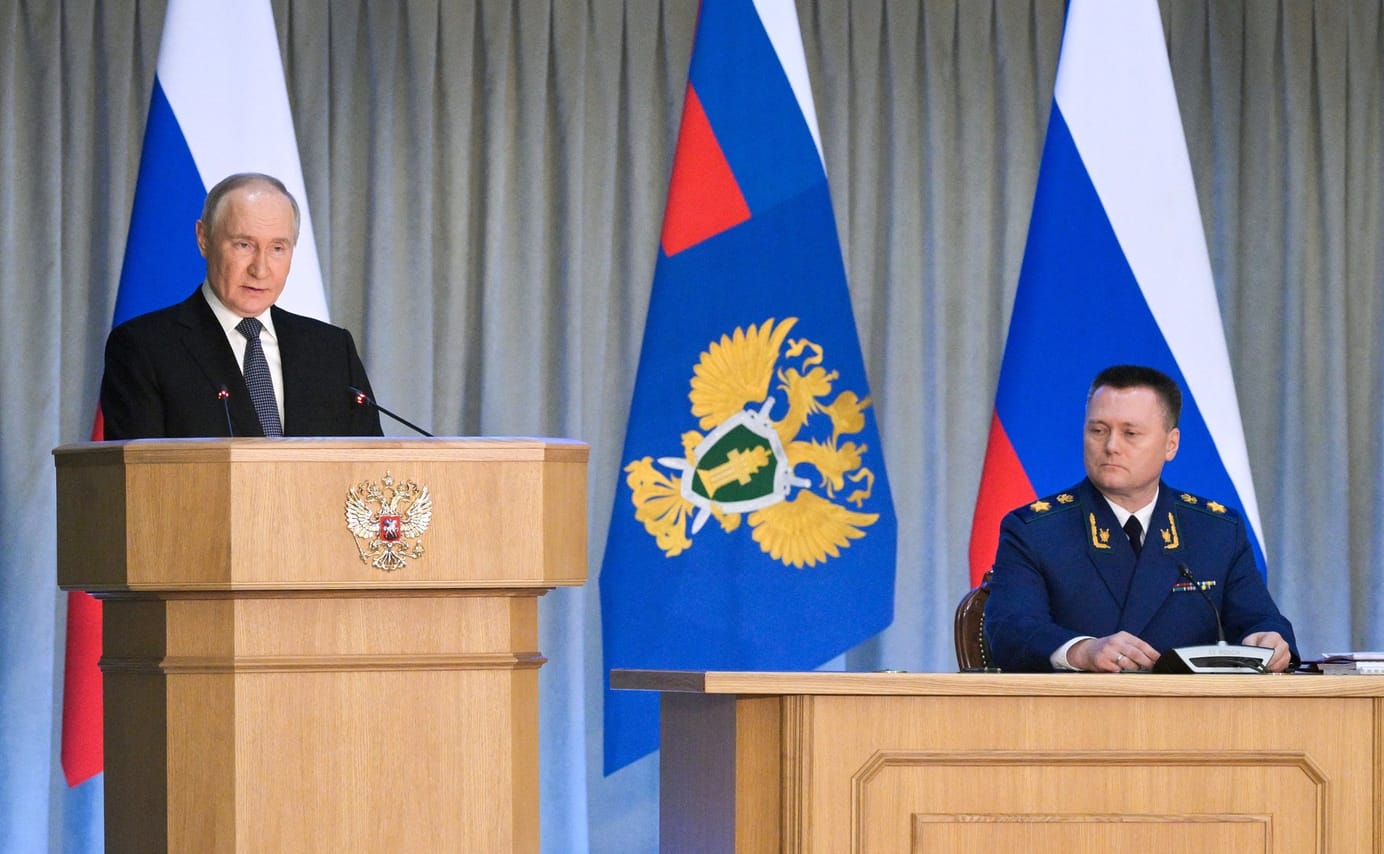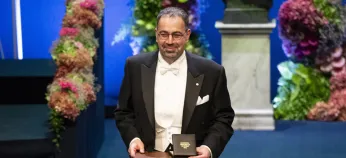
Budget planning and Russia’s spending reduction pipe-dream
Hello! This is Alexandra Prokopenko with your weekly guide to the Russian economy — brought to you by The Bell. In this newsletter we focus on whether — as some officials are advocating — Russia could actually reduce spending in its next budget despite the war in Ukraine. We also look at how Yevgeny Prigozhin’s insurrection prompted a huge spike in demand for cash and the rising numbers of Russians moving to Israel.
Is Russia’s talk about cutting state spending in wartime realistic?
Amid explosive growth in state spending and ever-increasing budget deficit, Russian officials are talking about cutting costs. However, it’s impossible to imagine any reduction in military expenditure at the moment and Prigozhin’s uprising could even prompt the government to increase social spending. The only way to reduce the budget deficit would be to increase taxes — but that is extremely unlikely before the 2024 presidential election. But possibly shortly thereafter, as in 2018, when the government, along with raising the retirement age, increased the VAT rate by 2 percentage points.
At the Petersburg International Economic Forum earlier this month, officials from the government’s “economic bloc” talked about the need to reduce spending in 2024. That’s hardly a sensation. Each summer, the government traditionally determines an outline for the budget over the next three years. At this time, the Finance Ministry always suggests cutting spending, claiming that there’s no money; the Economic Development Ministry insists there can be no growth without investment; and the Central Bank warns economic growth has to be balanced with preventing runaway inflation. This sort of exchange always opens the annual process to set the budget, and this year is proving to be no exception.
It’s not easy to say what the next budget will look like. Finance Ministry officials recognize that, in the coming three years, the “potential for stimulation” (i.e. higher spending) is limited. The current expectation is that there will be revenues of 27.2 trillion rubles ($312 billion) and spending of 29.4 trillion ($337 billion) in 2024.
Actual expenditure this year has already exceeded planned levels and, most likely, will increase even further. Economists expect the budget deficit to be 3 trillion rubles more than what was planned. The main driver of this, of course, is war-related expenditure, including construction projects in the occupied territories. According to the Stockholm Peace Research Institute, Russian defense spending increased by 9.2% last year.
It's already clear that 2024 will also see a large budget deficit. The size of that deficit depends not only on how much tax the state can collect, but also on how much it wishes to spend. Even if we assume that the fighting in Ukraine moves from an open to a largely frozen conflict, military expenditure — the major driver of the deficit — is unlikely to fall. Indeed, many think it will rise even further.
In addition, the abortive Prigozhin uprising last weekend could provide new pressure to increase spending: alarmed officials are likely to seek to boost social handouts and increase regional subsidies. Judging by the government’s actions at the moment, it seems it wants to try and make sure it gets every last kopek of tax revenue. But it’s unclear whether this can help generate greater tax revenues next year.
As well as the war, the Ukrainian territories occupied by Russia will also require a lot of investment. In the occupied regions of Donetsk, Luhansk, Kherson and Zaporizhia reconstruction is already underway. The spending by the Russian-appointed administrations in these regions is almost entirely subsidized: 88% of their funds come from Moscow.
However, officials are looking to cut expenses in other areas. At the Petersburg forum, Finance Minister Anton Siluanov said the budget includes “a lot of expenses that have not been reviewed for 100 years.” The minister added: “These sit in our heads like something inevitable, but now nothing is immutable. We need to look at all this again.” Presidential economic aide Maxim Oreshkin agreed that, in the coming months, the government should determine which industries can do without state assistance. Oreshkin said the Economic Development Ministry and the Finance Ministry should draw up a list of “inefficient and excessive expenditure that does not help to transform the economy.”
For political reasons, the government cannot cut military expenditure. President Vladimir Putin has repeatedly promised that the defense sector, the army and the security services will be well funded. Admittedly, the plan at present is to spend slightly less on them in 2024 than this year (9 trln roubles). But that is unlikely to stand the test of time because of increased costs associated with rising component prices — and logistics costs driven by sanctions and wage increases. Heavy equipment for the Rosgvardia, promised by Putin after the Prigozhin mutiny, will most likely be in next year's budget.
If the war continues, the government will keep offering money to the regions to pay financial benefits to men who have signed-up to fight in Ukraine. But, as war weariness increases, these payments will have to be indexed. Some regions are already finding it hard to cope with this financial burden and have cut offered these benefits.
In the past, the Finance Ministry has coped well with spending cuts. For example, during the pandemic, officials saved almost one trillion rubles — partly by reducing military expenditure. But, since then, spending has increased by almost a third to 29 trillion rubles. Social handouts, as well as military spending, fall into the category of “protected” expenditure and cannot be reduced. However, indexing them can save some money.
Additional funds can only come from tax increases. In 2017, the government undertook not to increase taxes for six years and has largely kept its word: key tax rates (on income, VAT and revenue) are unchanged. However, in 2024, after the presidential election, there is a six-year “window” for new increases — and the Finance Ministry has not ruled out rises. The elections themselves are an important factor for those devising the budget as a war-weary public will need to be offered financial incentives to vote for Putin.
One-off payments to the state from commodity companies are another possible source of income. Last year, state-owned gas giant Gazprom made a one-off mineral extraction tax payment of 1.2 trillion rubles, ensuring that the budget deficit remained within reasonable limits. This year, it’s the oil sector’s turn: the Finance Ministry plans to halve damper subsidies, postpone the introduction of tax deductions on depleted fields for three years and reduce Urals’ discount to Brent when calculating taxes. However, this all means that the tax burden on the oil industry is now close to its limit.
Oil-and-gas revenues are down from last year’s record levels, but remain close to what was raised in 2021. The big risk here for Russia lies in Western sanctions: there is talk about lowering the price cap on Russian oil in some European capitals, as well as imposing further restrictions on logistics and purchases. If these measures are implemented, they will have serious consequences for Russia’s finances.
Why the world should care
Those putting together Russia’s 2024 budget face a complex — but not impossible — task. Current reserves and taxation are sufficient to fund major expenses for next year. But, it will become increasingly difficult for the Kremlin to make ends meet due to a combination of Western sanctions, increased military spending and wartime economic changes.
Dear readers,
We’re very grateful for your support. But we’d love to hear more about how we can further develop The Bell’s English-language service. We think the best way to understand what you want is to talk face-to-face. If you can space half-an-hour for a Zoom call, drop us an email and we’ll get in touch. Thanks!
Prigozhin insurrection sends demand for cash soaring, ruble tumbling
On June 23, as news emerged of the Wagner uprising in Russia, banks refilled their cash desks and ATMs to the tune of 105.3 billion rubles ($1.2 billion), the Central Bank calculated. That’s the biggest surge since Sept. 21 when Putin announced a partial mobilization.
The historical record for cash demand was set earlier in 2022 when, within a day of Russia’s invasion of Ukraine, the volume of cash in circulation shot up by 1.4 trillion rubles.
Deputy Prime Minister Andrei Belousov talked about this dash for cash in a meeting this week with other deputy prime ministers. On Saturday, demand in 15 Russian regions was up by an average of 30%, according to Belousov. The greatest demand was in southern regions — Voronezh, Rostov and Lipetsk — that were along the route of the Wagner convoy as it headed toward Moscow. In some big cities, demand was up as much as 80%.
As well as cash, Russians also sought to buy up foreign currency. On Friday evening, banks pushed up exchange rates in response to demand. Although the ruble strengthened after Prigozhin’s climb-down, the U.S. dollar on Friday was worth over 89 rubles while the euro was approaching 97 rubles for the first time since March 2022. In part the continued weakness was a result of the end of the tax period. But it was also linked to political uncertainty following the uprising, which was the most serious threat to Putin’s 23-year rule. Analysts at UniCredit ultimately expect to see the ruble fall to 90 against the U.S. dollar.
Russians line up to move to Israel
Tens of thousands of Russians are currently awaiting repatriation to Israel, Neta Briskin-Peleg, the head of Nativa, an Israeli governmental liaison organization that maintains contact with Jews in Eastern Europe, said this week.
There are a total of 13,000 families waiting for consular checks, a process that should take eight months but now can last for up to a year, according to Briskin-Peleg.
Oded Forer, chairman of the Israeli Parliament’s commission on diaspora relations, did not rule out a surge in applications for Israeli citizenship following the Prigozhin mutiny. In total, Israel’s Foreign Ministry believes there are about 500,000 people in Russia who have the right to repatriate to Israel, as well as up to 70,000 Israeli citizens.
In the year after the Russian invasion of Ukraine, 50,900 Russian repatriates arrived in Israel, according to the Israeli Interior Ministry. That’s the highest level since 2000.
Putin requests proposal for currency regulation changes
Putin this week asked the government to submit a proposal by Aug.1 that will include suggestions about altering currency regulations and currency controls in light of the “changed geopolitical circumstances.” It’s not clear what such a proposal may include. He also ordered the government to extend a moratorium on the issuing of fines to Russian residents for not observing currency controls until the end of 2025 (it was supposed to expire at the end of this year). Both these orders were among a list of instructions issued by the Kremlin after a Thursday meeting between Putin and lobbying group Delovaya Rossiya. This all coincided with a significant weakening of the ruble (see above).
Key figures
- Public inflation expectations and price expectations among businesses both decreased in June. People are increasingly willing to spend, according to a Central Bank survey into inflation expectations. The proportion of those looking to spend disposable income on expensive goods, rather than saving, hit the highest level since Oct. 2018. Opinions on how sensible it is to make large purchases are at their most positive since March 2020. In June, the proportion of the population that prefers to hold its savings in cash reached 33% (up two percentage points from May).
- In general, June saw inflationary expectations return to pre-war levels. The survey suggests that people expect prices to increase 10.2% over the coming year. Price expectations for the coming three months were also down among businesses.
- Between June 20 and June 16, prices rose 0.16% according to official figures. Since the start of June, they are up 0.38%. Since the start of the year, they have grown 2.77%.
- Unemployment reached a historic low of 3.2% in May, or 3.3% on a seasonally adjusted basis, according to the State Statistics Service (Rosstat). Wages are responding to labor shortages — average real wage growth in May accelerated to 10.4% year-on-year.
- Retail sales continue to recover — they were up 9.3% year-on-year in May. This indicates that the population is increasingly choosing consumption over saving.
What to watch next week
- Monitoring industry financial flows (Central Bank, 6 July)
- GDP in the first quarter (first assessment, Rosstat, 5 July)
- Weekly inflation (Rosstat, 5 July)
- Central Bank’s Financial Congress (6-7 July)
Further reading
Prigozhin’s Mutiny May Increase Putin’s Longevity, argues Alexander Gabuev
He Stopped Prigozhin’s Mutiny: What’s Next for Belarus’s Chief Negotiator Lukashenko? Maksim Samorukov looks at what the Belarusian autocrat has achieved
Kirill Shamiev listing Lessons for the West from the Wagner mutiny
Russia Isn’t Going to Run Out of Missiles, argues Ian Williams





